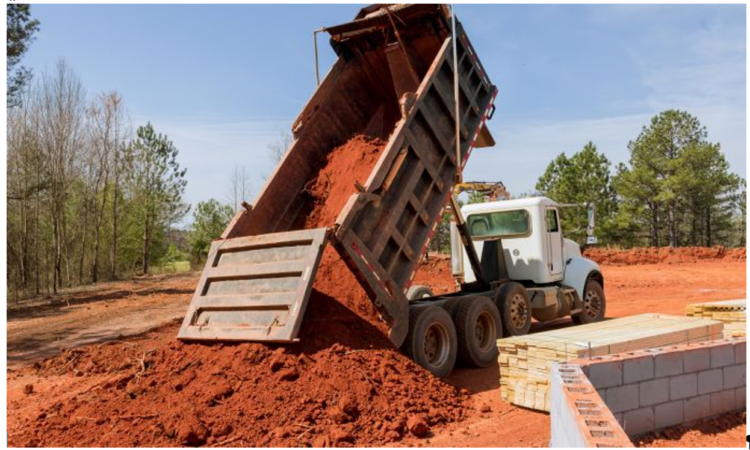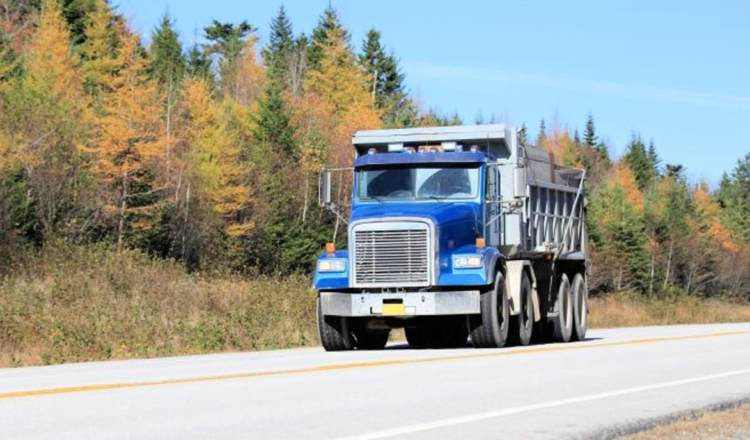A Commercial Driver’s License (CDL) is required to operate a dump truck. Depending on the vehicle and the state, specific endorsements may also be necessary.
Driving a dump truck professionally requires compliance with specific regulations and licensing standards. The importance of obtaining a CDL must be considered for those aspiring to enter the field of heavy vehicle operation.
This license demonstrates that you possess the knowledge and skills to operate large and potentially hazardous vehicles safely.
It’s critical to understand that different classes of CDLs and endorsements apply to various types of heavy equipment and cargo. For instance, a Class B CDL is typically required to operate a standard dump truck.
This introductory guide ensures prospective dump truck drivers know the essential prerequisites for their career path and encourages safe and legal driving practices from the outset.
Benefits Of Using Cfls For Dump Trucks
Drivers and fleet managers know that efficiency is key in the hauling industry. But what role do CFLs – Controlled Final Drives – play?
Let’s dive into the benefits of using CFLs in dump trucks. These benefits lead to cost savings and better performance.
Improved Fuel Efficiency
Dump trucks equipped with CFLs use fuel better than traditional setups. With precise power control, CFLs ensure that engines run at optimal levels.
This smart use of power saves money on fuel. It also means less time spent at refueling stations.
Operators can expect a smoother drive with minimum energy waste. This efficiency stems from the advanced design of CFLs, which adjusts to different working conditions without manual input.
Reduced Emissions
Less fuel consumption leads to lower emissions. CFLs promote an eco-friendly operation. Dump trucks with CFLs contribute to a greener environment.
This not only meets stringent regulations but also enhances the company’s reputation among clients and the public.
- Carbon footprint diminishes with more efficient fuel use.
- Compliance with environmental standards becomes easier.
- Future-proof operations against stricter emission laws.
Increased Payload Capacity
Every load counts in the dumping business. CFLs maximize the carrying capacity of dump trucks. Here’s how:
| Without CFL | With CFL |
| Energy losses increase | Energy used effectively |
| Weight limits reached faster | Carry more, less strain |
By enhancing power distribution, dump trucks can carry heavier loads. This increase in productivity means more material moved per trip. In the long term, it leads to a significant boost in profits.
Challenges Of Using Cfls For Dump Trucks

When adding CFLs (Compact Fluorescent Lamps) to a dump truck’s lighting system, several challenges can arise.
From the cost factor to the practicality of the models available, truck owners must weigh these considerations carefully. Here’s a look at the hurdles they might face.
Higher Initial Cost
One of the first barriers for dump truck operators is the initial investment in CFL technology. CFL bulbs, known for their energy efficiency, come with a heavier price tag than traditional lighting options.
This can affect the budget for fleet upgrades or replacements.
- Energy savings may offset costs over time.
- Efficiency leads to long-term economic benefits.
Limited Availability Of CFL Models
Finding the right CFL model for dump trucks can be tricky. Due to specific design and power requirements, not all CFL bulbs are suitable for heavy-duty vehicles like dump trucks.
The limited range of options may lead to difficulty in sourcing the ideal CFL fit.
| CFL Feature | Relevance to Dump Trucks |
| Power Consumption | Must match the truck’s system |
| Size and Fit | Needs to accommodate truck fixtures |
| Durability | Should withstand harsh conditions |
Maintenance And Repair Considerations
Maintenance is another aspect to think about. CFLs require specific handling procedures due to their components.
The repair processes can be different, possibly requiring specialized maintenance work.
- Trained technicians may be needed.
- Replacement parts might be harder to find.
- Proper disposal is required for environmental safety.
Cfl Regulations And Compliance
Commercial dump trucks are vital for the construction and waste management industries. These vehicles must adhere to specific regulations, including those involving Commercial Fitness Licensing (CFL).
CFL standards ensure that dump trucks operate safely, efficiently, and with minimal environmental impact.
Legal Requirements For CFL Usage
Each region has its own set of legal mandates for commercial vehicles. Compliance with these rules is not optional but a prerequisite for operating dump trucks.
To meet legal requirements for CFL, owners must often:
- Obtain a valid CFL certificate.
- Display CFL details on the vehicle visibly.
- Renew the license within the set deadlines.
Environmental Regulations
Environmental considerations are crucial in maintaining CFL certifications. Authorities implement regulations designed to limit pollution and promote eco-friendly operations.
Dump truck operators must:
- Pass emissions tests for their vehicles.
- Use approved fuels and oils.
- Adhere to vehicle idle time restrictions.
Safety Standards And Inspections
Ensuring that dump trucks are safe for operation on roads involves rigorous checks. Inspections cover:
| Component | Inspection Criteria |
| Brakes | Performance and wear |
| Lights | Functionality and visibility |
| Tires | Tread depth and pressure |
Regular maintenance and compliance with safety standards not only ensure CFL compliance but also protect the driver and other road users.
Case Studies: Cfl Implementation In Dump Trucks

The “Case Studies: CFL Implementation in Dump Trucks” section explores real-life applications of CFL (Compact Fluorescent Lamp) technology.
It sheds light on how this innovation enhances dump truck operations. Readers will find authentic cases with tangible outcomes.
Success Stories
We have seen remarkable improvements in dump truck operations. Notable benefits include:
- Energy Savings: The CFLs led to significant reductions in energy use.
- Longer Lifespan: CFLs often outlast traditional bulbs, meaning fewer changes and less downtime.
- Improved Safety: Better lighting increased nighttime visibility, reducing accidents.
One impressive story comes from XYZ Construction. They reported a 30% drop in energy costs after switching to CFLs.
Challenges And Lessons Learned
Transitioning to CFL wasn’t without hiccups. Common issues tackled were:
- Initial Investment: The upfront cost was higher, but long-term savings justified it.
- Training: Crews learned new handling and maintenance procedures.
- Adaptation: Finding CFLs fit for the tough dump truck environment took time.
For example, ABC Haulage faced installation challenges with older trucks. However, their perseverance paid off.
Now, they experience fewer light-related interruptions.
Future Outlook: Innovations In CFL Technology
The world of commercial trucking is on the brink of revolution. Innovations in Compact Fluorescent Lighting (CFL) technology promise not just brighter lights for dump trucks but also remarkable enhancements in efficiency and sustainability.
Let’s explore how these advancements could reshape dump truck operations in years to come.
Advancements In CFL Design
One pivotal area of innovation is the design of CFLs. Engineers are developing bulbs that offer better light quality and longer life spans.
- Increased durability against vibration and shock
- Improved form factor for easier installation in diverse dump truck types
- Enhanced weather resistance, providing reliable performance in all conditions
Potential Efficiency Improvements
Efficiency is key in the trucking industry. CFL technology advancements are setting the stage for significant efficiency gains.
- Power consumption: LED reduces energy use, cutting costs
- Heat emission: New CFLs emit less heat, further reducing energy use
- Lifespan: Longer-lasting CFLs mean fewer replacements
Exploration Of Alternative Power Sources
As environmental concerns grow, the push for alternative power sources gains momentum. Innovations are heading towards integrating renewable energy sources with CFL technology.
| Power Source | Benefits |
| Solar | Harnessing sunlight to power CFLs, reducing energy costs |
| Wind | Using wind turbines to generate electricity for lights |
| Hybrid | Combining traditional and renewable energies for optimal efficiency |
Frequently Asked Questions About CFL And Dump Truck
What Are Cfls For Dump Trucks?
CFL stands for Clearing Forward Lighting, typically used in larger vehicles like dump trucks for enhanced forward visibility.
They are not a standard requirement but can help in improving road safety, especially during night operations or in low-visibility conditions.
Do Dump Trucks Require Special Lighting?
While standard headlights are a legal requirement, dump trucks often benefit from additional lighting such as CFLs.
These extra lights improve visibility for the driver and are particularly useful in construction areas, mining operations, or during nighttime work.
How Does CFL Lighting Improve Safety?
CFL lighting improves safety by providing brighter and more focused illumination ahead of the vehicle.
This helps the driver to spot obstacles, changes in road conditions, and other vehicles more easily, thereby reducing the risk of accidents.
Can CFLs Be Retrofitted On Old Dump Trucks?
Yes, CFLs can be retrofitted on old dump trucks. It’s a common upgrade for enhanced visibility and safety. However, it’s essential to ensure that the installation is done professionally and in compliance with vehicular lighting regulations.
Conclusion
Wrapping up, and understanding CFL requirements for dump trucks is essential. By ensuring your truck meets lighting regulations, you improve safety and compliance.
Remember, proper CFL installation contributes to operational efficiency and road security. Drive responsibly – make sure your dump truck’s CFL is up to the task.


Understanding the importance of CFLs for dump trucks is crucial for safety and efficiency on construction sites. Thanks for sharing this valuable information.